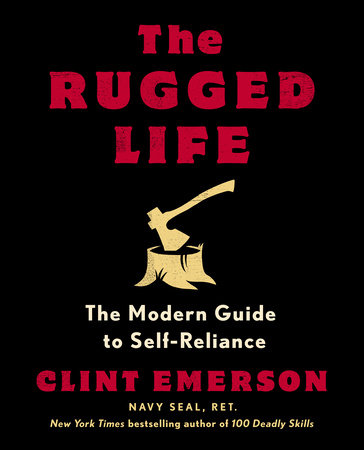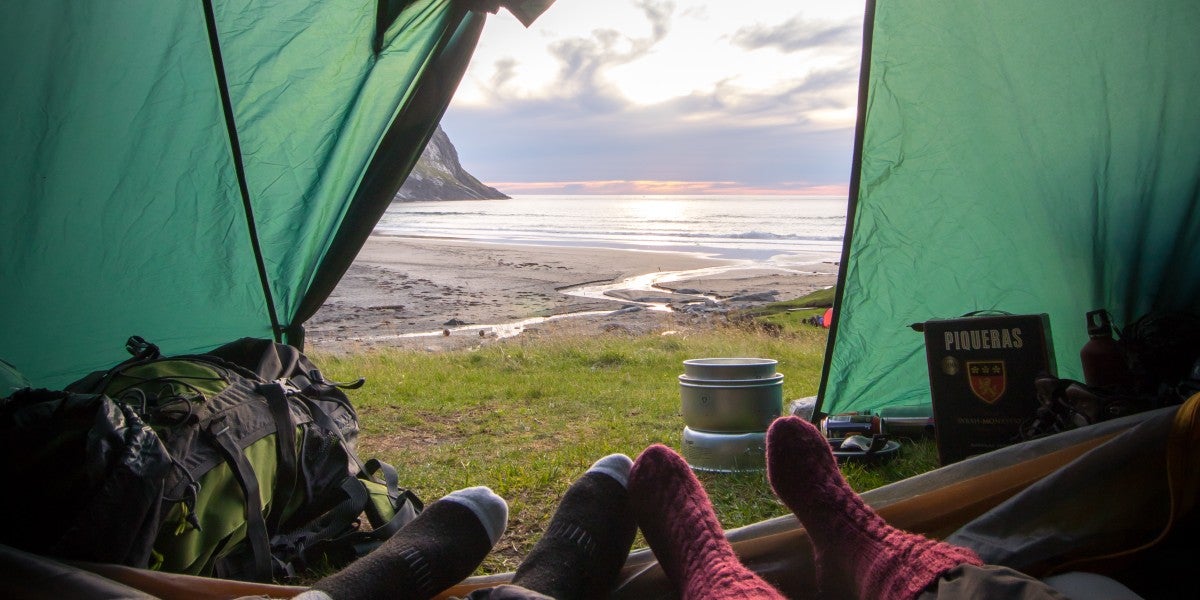1
Be Your Own Builder“I went to the woods because I wished to live deliberately, to front only the essential facts of life, and see if I could not learn what it had to teach, and not, when I came to die, discover that I had not lived.”
—Henry David Thoreau
The first step of modern homesteading is knowing where you want to live and what kind of home you want to live in. If after you read through the questions of other homesteaders and decide that you aren’t ready to leave the grid, that’s fine. You can still retrofit an existing home, spec out a new home, or build a weekend retreat (that’s ready for a full move-in) incorporating many self-sufficient and energy-independent principles.
There’s still cheap land to be found. You can get farmland in Iowa for less than $4,000 an acre. But you put a house on that land and the price quadruples. And here’s the thing: that house is likely to be more than you need. If you want to live off-grid, you don’t want a big house. You want something small that’ll be easy to keep warm in the wintertime and easy(ish) to keep cool in the summer. The best part about building for yourself, though, is your ability to get creative. Choosing your site to allow you to build with south-facing windows, north-facing hay bales, and an exterior kitchen with a center courtyard? That might be just right. Or you can plant plenty of shade trees and think about sleeping in the basement in the summer. It’s entirely what works for you.
Of course, “warm” and “cool” are relative terms, and are dependent on your thermal comfort zone. If you can’t sleep unless you’ve got a blanket on you and it’s a balmy 68°, then you’ll probably need to stay on the grid and get central air. But if you’re able and willing to be more flexible with your comfort, there are some things you can do to build a house that suits you and your needs, and draws as little energy as possible.
So how flexible are you? What’s important to you?
Aesthetics. Don’t discount these! The most energy-efficient house is probably a hole in the ground, but that can get really depressing really fast. How do you want your home to feel? What materials are you happy being surrounded by?
Budget. You can make a great cheap house, but there are downsides, often including aesthetics and comfort. What can you afford?
DIY. How much of this can you do yourself, and what will you need to hire out?
Size. How many people are going to be living there with you? How much space do you really need?
Climate. What’s the temperature like where you live, in both summer and winter? Build to suit where you live, accepting the realities of your local climate, rather than trying to battle the climate to suit your aesthetic. And take climate into account when you’re deciding where to live in the first place! If you see some land that’s $1,500 an acre, swell, but if it’s in the desert, you’re going to need a ton of water, and you’ll probably have to buy it. So how cheap is that land, really?
Put tarpaper between the house and the roof. It’ll seal out moisture and act as a barrier to leaks. If you’re in a really humid environment, consider putting tarpaper on your walls, too. You can also put in a ventilation fan on the roof, to pull out the heat and prevent the greenhouse effect. Not only will this keep you cooler, it’ll prevent condensation, which can lead to black mold.
Site. What’s your building site like? Can you use vegetation or placement to offset energy usage?
Based on your answers to all those questions, you may decide you’re better off with an existing house or updating an existing house. But if you’re still into the idea of building your own homestead, let’s talk some more about thermal comfort. Thermal comfort in building materials is dependent on two things:
Thermal mass, which is a material’s ability to absorb or release heat. Stone, adobe, earth, and concrete are all high in thermal mass, and will absorb heat when it’s hot (making you feel cooler) and release heat when it’s cold (making you feel warmer).
Insulation, which slows the passage of heat. Insulation is light and fluffy, and the more of it you have, the more it can trap air pockets of heat. Again, it will keep you warm in the winter and cool in the summer. Insulate everything—your home, your barn, your animal housing, all of it. It’s worth it.
It all comes down to how comfortable you can make yourself and your home. Remember, you’re going to be living and working your homestead all day every day. You want to be able to rest and relax so that you can get up and do it all again tomorrow.
Building by ZoneIt’s helpful to think about the climate zones in the US to determine what kind of home you should build and where.
Given that, you have a few options for the type of home you can build.
Earthen HomesEarthen homes are by nature extremely high in thermal mass, and so don’t require much insulation. Earth with decent clay content will absorb moisture and balance the humidity in your home. There’s a reason people have been building them for thousands of years. And if you build them yourself, earthen homes can be—get it—dirt cheap. They tend to work best in the areas with low humidity such as the Southwest. There are several options for earthen homes:
Adobe, a mixture of sand, clay, and some sort of fiber (usually straw) that is dried and made into bricks, and then stacked and mortared to form walls.
Rammed earth, a mixture of earth, sand, gravel, and clay that is wet, compressed, and often mixed with cement. It’s a little harder to work with, but when done right, creates a durable, stonelike wall.
Cob, a mixture of clay, sand, water, and straw, which is formed into walls. It’s soft enough to mold into whatever form you like, whether you want to build a hobbit house or another fanciful shape that works for you.
Straw HomesThis can seem like an incredibly bad idea, given the story of the big bad wolf, but straw is actually a great form of insulation. It doesn’t work all that well in high-moisture climates for obvious reasons, but if you’ve got a source and live in a dry environment, you’ve got a ready supply of eco-friendly and inexpensive building materials. Stack up some straw bales for walls with high insulation, and add thermal mass with a layer of earthen plaster.
You could also pack some loose, clay-coated straw into structural forms, as with cob. If you pay attention to the weather patterns, you can put more clay in the wall that needs more thermal mass (often the south wall), and more straw in the wall that needs more insulation (often the north wall).
Composite HomesIf that’s all a little too DIY for you—and if you’re worried about building up to code—you can also purchase composite materials that are durable, easy to work with, and that create airtight, energy-efficient structures. Since they are airtight, you have to make sure you’re creating proper ventilation, or you will have issues with mold. Depending on where you live, some adjustments may need to be made for insulation, weatherproofing, etc.
Structural Insulated Panels. SIPs contain a core of rigid foam insulation that is surrounded by composite board. They arrive precut and provide insulation, but not thermal mass. They’re expensive, but if you’re paying a contractor, you may well end up saving money because they’re incredibly easy and fast to work with.
Insulating Concrete Forms. ICFs are interlocking, hollow blocks or panels that can be stacked without mortar. There are cavities within these rigid foam structures that are reinforced with steel and then filled with concrete. They are thermally efficient and structurally sound, and their modular capabilities mean that you can be a little more creative with your structure.
EarthshipsThe name kind of says it all: these homes are pretty damn cool. They include natural materials, including earth and straw, as well as upcycled old tires or whatever else they can use that will still make the home energy-efficient. They are intended for off-grid living in nonhumid areas, incorporating sun and rainwater into the structure. They use thermal mass and cross-ventilation to maintain thermal comfort, and they are designed as simply as possible. That said, you’d probably want to purchase the plans since construction can get complex.
YurtsThese tentlike structures are durable, inexpensive, and shockingly livable. They’re sold as kits and can be large enough to accommodate an entire family. They are extremely energy-efficient and ideal for off-grid living. They can be hot in the summer, but with proper ventilation, you’ll stay cool enough. You can also build them on a raised platform to give you additional breeze and storage underneath.
Copyright © 2022 by Clint Emerson. All rights reserved. No part of this excerpt may be reproduced or reprinted without permission in writing from the publisher.








